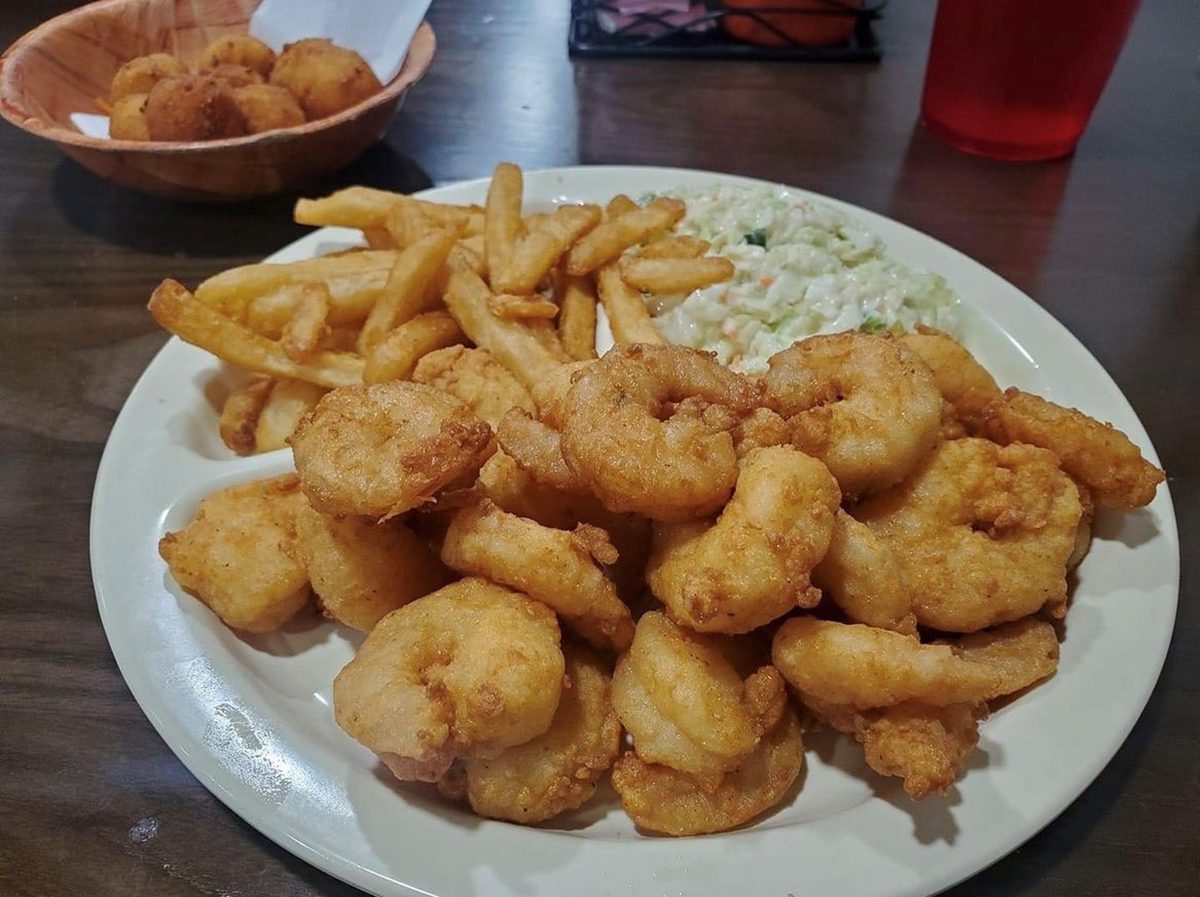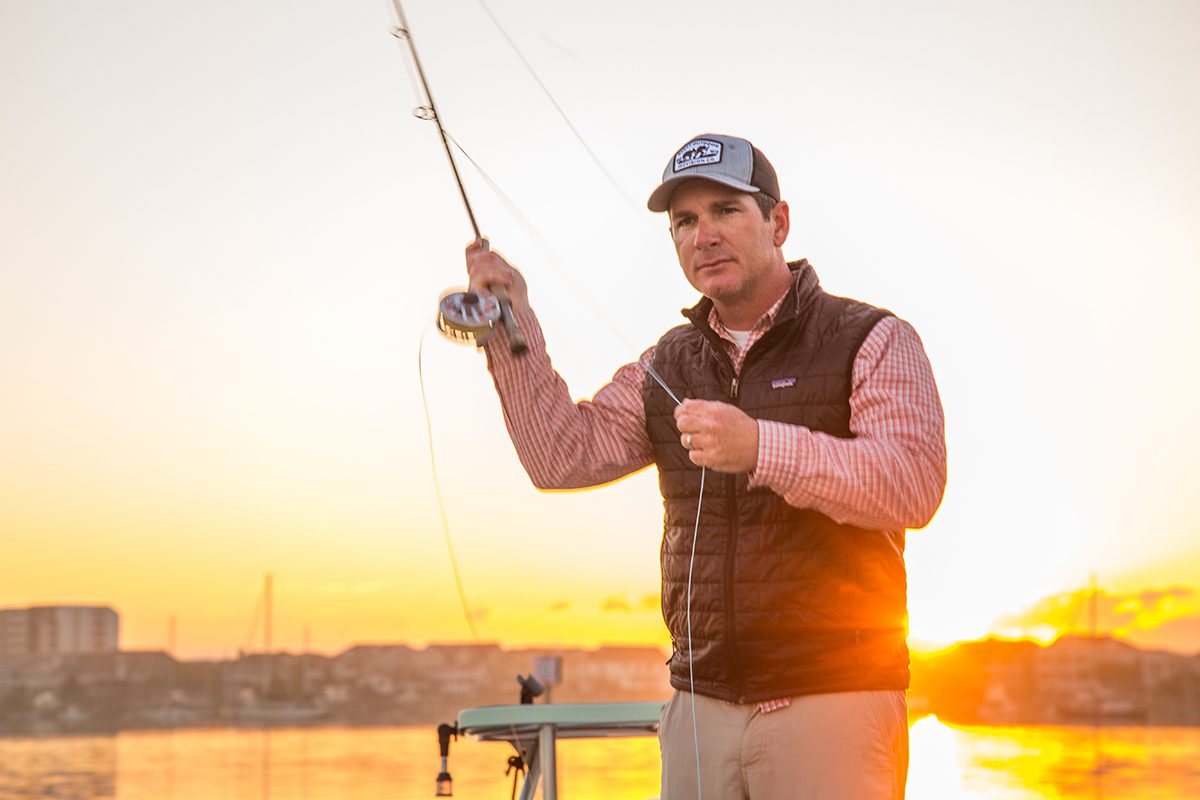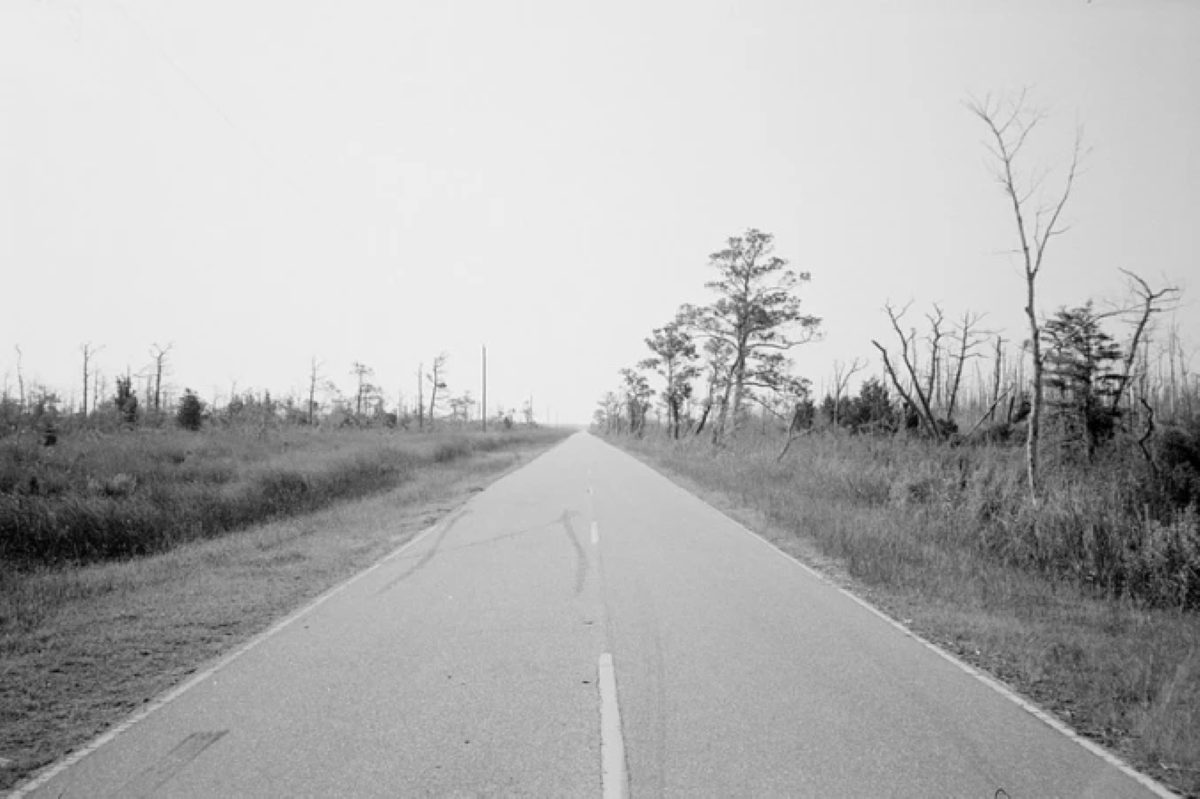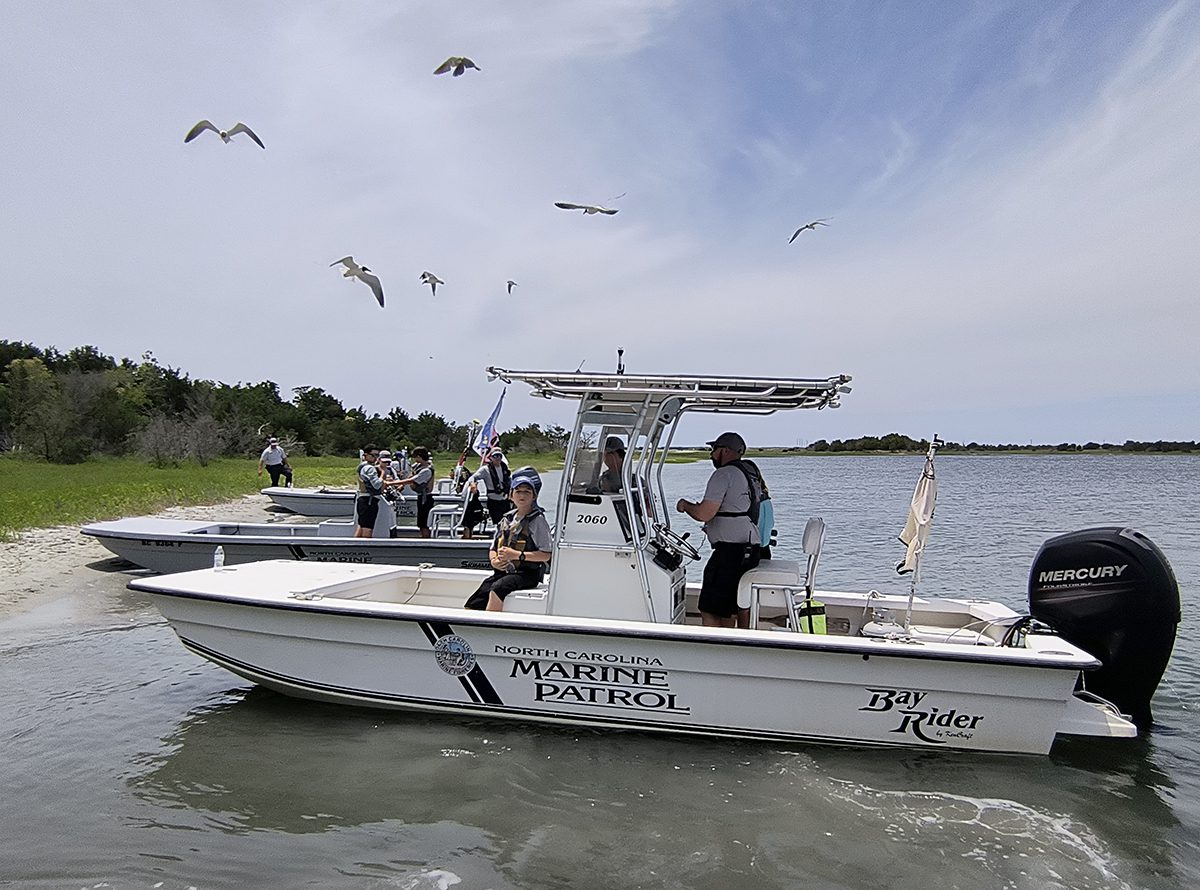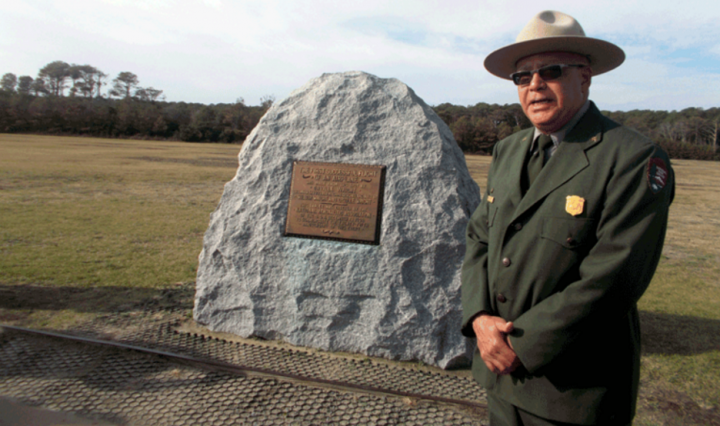
Reprinted from the Outer Banks Sentinel.
MANTEO — After 40 years in the National Park Service, Wright Brothers National Memorial Park Historian Darrell Collins retired on Jan. 17 — exactly one month after telling the story of the aviation pioneers for the last time at the annual first flight celebration on Dec. 17.
Sponsor Spotlight
Each year since 1978, Collins has presented the Wright Brothers Story during the wreath-laying ceremony at the boulder marking the spot where Orville first took off in the flyer built by him and his brother Wilbur.
“It has been amazing,” Collins said in an interview. “And the seventeenth of December is probably the best day to work at Wright Brothers. That’s when we look back at the day and the moment that it all happened. There’s no more exciting day to be at the park than that day.”
Described variously as a masterful and inspiring storyteller, a “national treasure” and an “Outer Banks institution,” Collins has been recognized by the nonprofit First Flight Foundation as one of the “top five historians in the world on early aviation and the Wright brothers.” He is respected and loved for his warmth, down-to-earth humor, profound historic insight and flair for the dramatic.
In 2003, he was awarded the Order of the Long Leaf Pine, the highest civilian recognition given by the state of North Carolina.
Sponsor Spotlight
Collins was honored by the Dare Board of Commissioners at its Feb. 6 meeting, with Board Chairman Bob Woodard declaring that, “in a five-minute span, he can give you the history and he can have you laughing. In the next two or three minutes he’ll have you crying. He is a phenomenal human being.”
Outer Banks Group National Park Service Superintendent David Hallac told the Sentinel that Collins “is without a doubt one of the most inspirational storytellers and interpreters the Park Service has ever had the pleasure to work with.”
Tom Crouch, senior curator at the Smithsonian National Air and Space Museum, said Collins will “certainly be missed by all of us who know and love the story of the Wright brothers. He is a good friend, a true gentleman and an inspiration. And he does this like no one else.”
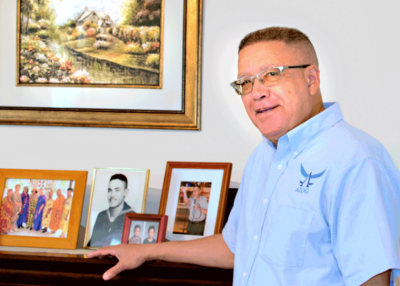
A lifelong Manteo resident, Collins traces his ancestry on his mother’s side to the first African-American residents of the Freedmen’s Colony established in 1862. On his father’s side his genealogy goes back even farther — to the Native American residents of Roanoke Island, who called the Outer Banks home long before the Lost Colony appeared and vanished.
His uncle, Herbert Collins, served as the last commanding officer of the only all-black Pea Island Lifesaving Station before it was decommissioned in 1947. His father, Frank Collins, served 16 years in the U.S. Coast Guard before he was killed in Hurricane Donna in 1960. His mother, Dellerva Collins, served on the Manteo Board of Commissioners for more than 26 years.
After her death in 2005, Collins was appointed to finish his mother’s term and has been re-elected and continued to serve as a commissioner ever since. He and his wife Tonya attend Haven Creek Missionary Baptist Church in Manteo and have two sons and one grandson.
Beginning his Park Service career by running a printing press at headquarters, Collins was soon offered a seasonal ranger position as park interpreter at the Wright Brothers Memorial.
The following year, 1978, was a “very big year at Wright Brothers,” he said, as the park geared up for the celebration of the 75th anniversary of the first flight. Traveling around the region with a NASA exhibit, Collins did his first public speaking on the Wright brothers.
“I was basically at the right place at the right time,” he recalled. Taking a position as a full-time park interpreter/historian, Collins said he was inspired by two aviation historians who came and spoke at the 75th anniversary.
“The great Paul E. Garber is the man who started the national air museum in 1972 and was responsible for all the collections up to that point. He was also the man who brought the Wright brothers’ airplane back to America in 1948, after it had been in England for 20 years at the Science Museum in South Kensington, London.
“The other speaker was Charles Gibbs-Smith, a famous aviation historian at the Science Museum in South Kensington. Both these men really opened up my eyes to what the Wright brothers actually accomplished and how significant their invention truly was. I fell in love with the story of the Wright brothers, and that’s when I realized this was something I wanted to pursue as a career.”
Dedication, Perseverance and Determination
Collins said he has sought to pattern his life after the Wright Brothers, to “emulate their dedication, perseverance and determination” and to pass that on to others — particularly the younger generation.
“Our youth are the ones who will shape the future,” he noted. “So we have to challenge and inspire our young people to step out and create that future. It’s all part of the never-ending journey that started at Kitty Hawk.”
Collins said speaking about the Wright brothers has taken him across the country and around the world, introducing him to people and experiences that most would only dream of.
“I’ll never forget getting to take a back-seat ride in an F-15 Strike Eagle,” Collins said. “We did a high-performance takeoff from Seymour Johnson Air Force Base. The airplane went down the runway, then pulled up vertically and went straight up 7,000 feet. I knew it was a great invention, but I didn’t know it was that great.”
Pausing, Collins added, “Aviation has touched so many lives, and I’ve literally met all the greats. I had breakfast in Pensacola, Florida, with the first man and the last man to set foot on the moon — Neil Armstrong and Eugene Cernan.”
Serving at the park during the centennial celebration in 2003, Collins recalled the one downside at “the event of the century.” The Wright flyer replica, which had flown successfully three times previously, failed to take off that day because the conditions were not right.
“The airplane couldn’t take off on a nice warm day,” he explained. “You had to have at least an 18-mile-per-hour wind and freezing temperatures in order for the plane to fly under its own power.”
Less than a month into retirement, Collins is already anxious to get on with the “next chapter” of his life. He’s started his own business — A Legacy of Greatness. The author of numerous articles and in-demand speaker on the early days of aviation plans to continue to “tell the story.” A book is also in the works. It will focus on the Wright brothers and his experiences at the Wright Brothers Memorial.
Collins said what really impresses him about the brothers is that they didn’t just study what others had written about aviation, but “they created the science of aviation. They had excelled in math in high school and they used this math 18 years later to invent the world’s first successful powered airplane — the same math that is used today to design modern airplanes.
“They achieved what was then considered to be impossible, and I believe that set the stage for America’s achievements that would follow. If flight was impossible — something that would require a ‘miracle’ — and they did it, then anything was possible. And I believe that attitude has changed the course of our nation and the world.”
Learn More
This story is provided courtesy of the Outer Banks Sentinel, a weekly Dare County newspaper that is published in print every Wednesday and headquartered at 2910 South Croatan Highway, Nags Head. Aside from the print paper, the Sentinel also produces a continually updated digital version at www.obsentinel.com.




